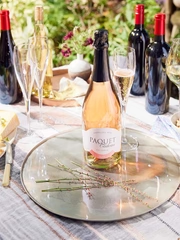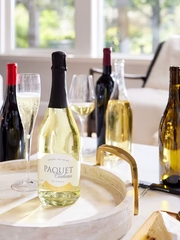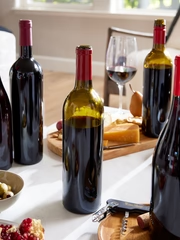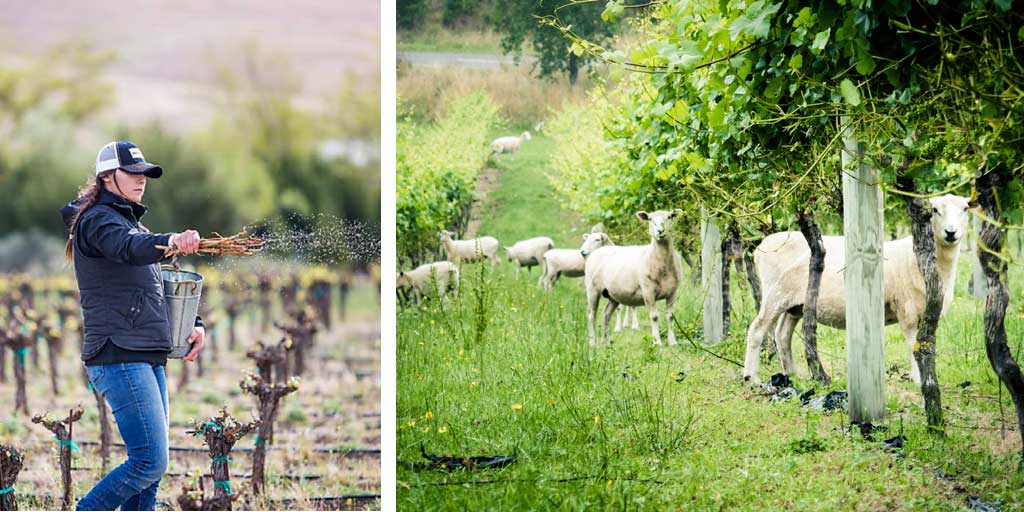 Sustainable Vineyards
Sustainable vineyards practice water and energy conservation and preserve ecosystems and local wildlife. Vineyards that produce sustainable wine actively encourage and maintain healthy soils. By doing so, these vineyards will be able to continue growing grapes for years to come.
The Code of Sustainable Winegrowing Practices Workbook was introduced in 2002 by members of the Wine Institute and the California Association of Winegrape Growers (CAWG). Participants have a tool to conserve natural resources, protect the environment and enhance relationships with employees, neighbors and local communities.
More than 1,200 California wineries and affiliated organizations responsible for 85% of the nation’s wine production are enrolled. The workbook includes 14 chapters of practical guidelines, like responsible irrigation to preserve natural aquifers, understanding of topography and soil characteristics prior to planting, soil management, pest management, ecosystems management and energy conservation. Removing leaves from grapevines to prevent fungus or solar panels is now very popular in many vineyards.
Sustainability is by far the most advanced of the three practices of organic, sustainable and biodynamic. Wine Shop At Home has embraced many relationships with partner growers and wineries who are focusing on sustainable activities. Their award-winning qualitative grapes have been the backbone of our production for the past 8 years.
Sustainable Vineyards
Sustainable vineyards practice water and energy conservation and preserve ecosystems and local wildlife. Vineyards that produce sustainable wine actively encourage and maintain healthy soils. By doing so, these vineyards will be able to continue growing grapes for years to come.
The Code of Sustainable Winegrowing Practices Workbook was introduced in 2002 by members of the Wine Institute and the California Association of Winegrape Growers (CAWG). Participants have a tool to conserve natural resources, protect the environment and enhance relationships with employees, neighbors and local communities.
More than 1,200 California wineries and affiliated organizations responsible for 85% of the nation’s wine production are enrolled. The workbook includes 14 chapters of practical guidelines, like responsible irrigation to preserve natural aquifers, understanding of topography and soil characteristics prior to planting, soil management, pest management, ecosystems management and energy conservation. Removing leaves from grapevines to prevent fungus or solar panels is now very popular in many vineyards.
Sustainability is by far the most advanced of the three practices of organic, sustainable and biodynamic. Wine Shop At Home has embraced many relationships with partner growers and wineries who are focusing on sustainable activities. Their award-winning qualitative grapes have been the backbone of our production for the past 8 years.
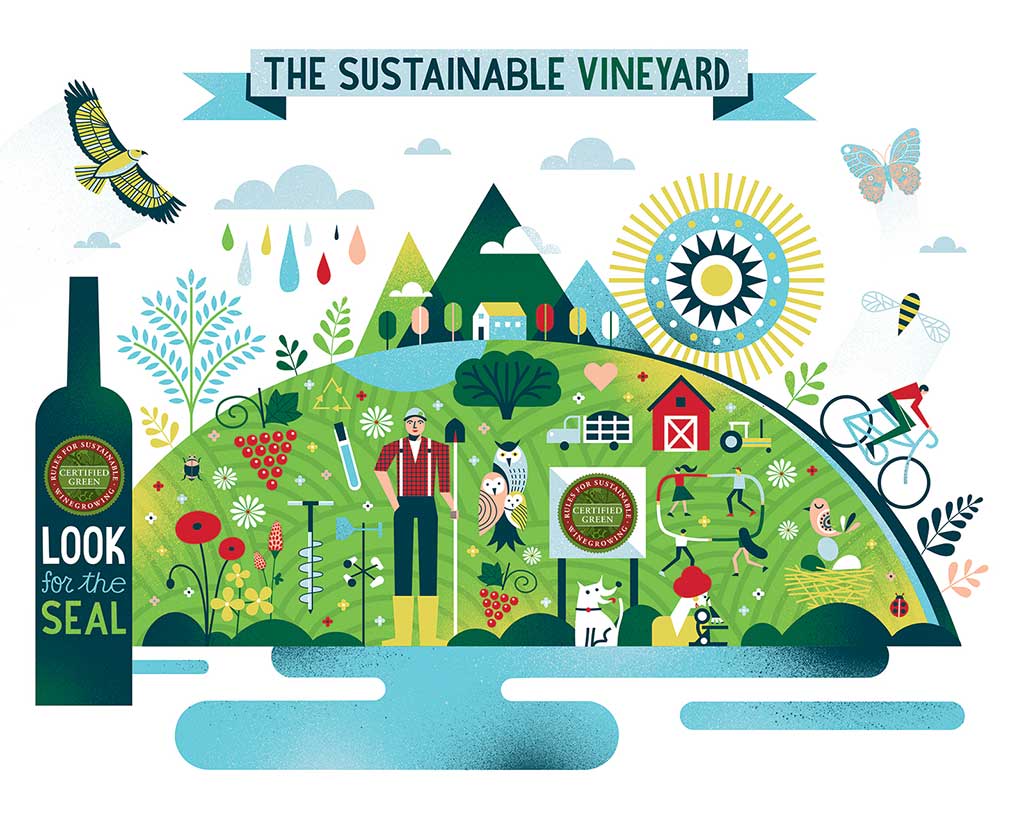 We also partner with suppliers that are changing their production facilities to meet new regulations and also to improve the quality of their products. We purchase mostly domestic glass produced on the West Coast. Using domestic glass instead of imported glass helps us reduce our carbon footprint, as it relates to the shipment of glass. The corks we use are the most sustainable corks ever made. This is done by harvesting the bark from live trees, then letting it grow back for future harvests. It doesn’t get any better than that! Our bottling facility uses sanitation tools that reduce both water and power usage. The facility also has adopted an in-house nitrogen generator that cuts the management and delivery of large cylinders of pressurized inert gas nearly in half.
We also partner with suppliers that are changing their production facilities to meet new regulations and also to improve the quality of their products. We purchase mostly domestic glass produced on the West Coast. Using domestic glass instead of imported glass helps us reduce our carbon footprint, as it relates to the shipment of glass. The corks we use are the most sustainable corks ever made. This is done by harvesting the bark from live trees, then letting it grow back for future harvests. It doesn’t get any better than that! Our bottling facility uses sanitation tools that reduce both water and power usage. The facility also has adopted an in-house nitrogen generator that cuts the management and delivery of large cylinders of pressurized inert gas nearly in half.
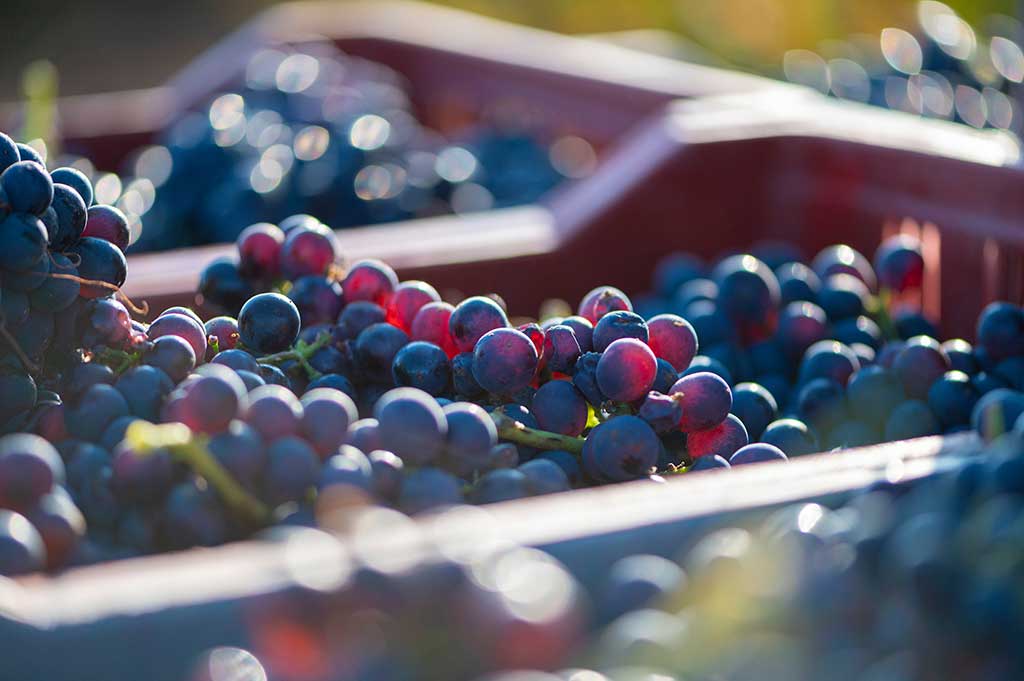 Biodynamic Vineyards
Biodynamic wine starts with grapes farmed without synthetic pesticides or fertilizers. Few if any additives are used. The farming practices view the vineyard as one solid organism. Natural materials, soils, and composts are used. Animals – from ducks to horses to sheep – live on the soil and fertilize it, creating a rich, fertile environment for the vines to grow in. The idea is to create a self-sustaining system.
Biodynamic winegrowers represent an extremely small percentage of wineries. All biodynamic wines are required by law to be bottled at the estate where they are grown, which can present a challenge. (Natural wine is farmed either organically or biodynamically, eliminating the use of chemicals and using natural slurries and composts. Intervention is kept to an absolute minimum.)
In conclusion, vine growers are mindful of the impact they can have on their generation and the next. The large majority have taken steps toward adopting these practices. Some have even said that certain practices can enhance the terroir effect and increase the quality of the grapes.
Biodynamic Vineyards
Biodynamic wine starts with grapes farmed without synthetic pesticides or fertilizers. Few if any additives are used. The farming practices view the vineyard as one solid organism. Natural materials, soils, and composts are used. Animals – from ducks to horses to sheep – live on the soil and fertilize it, creating a rich, fertile environment for the vines to grow in. The idea is to create a self-sustaining system.
Biodynamic winegrowers represent an extremely small percentage of wineries. All biodynamic wines are required by law to be bottled at the estate where they are grown, which can present a challenge. (Natural wine is farmed either organically or biodynamically, eliminating the use of chemicals and using natural slurries and composts. Intervention is kept to an absolute minimum.)
In conclusion, vine growers are mindful of the impact they can have on their generation and the next. The large majority have taken steps toward adopting these practices. Some have even said that certain practices can enhance the terroir effect and increase the quality of the grapes.



